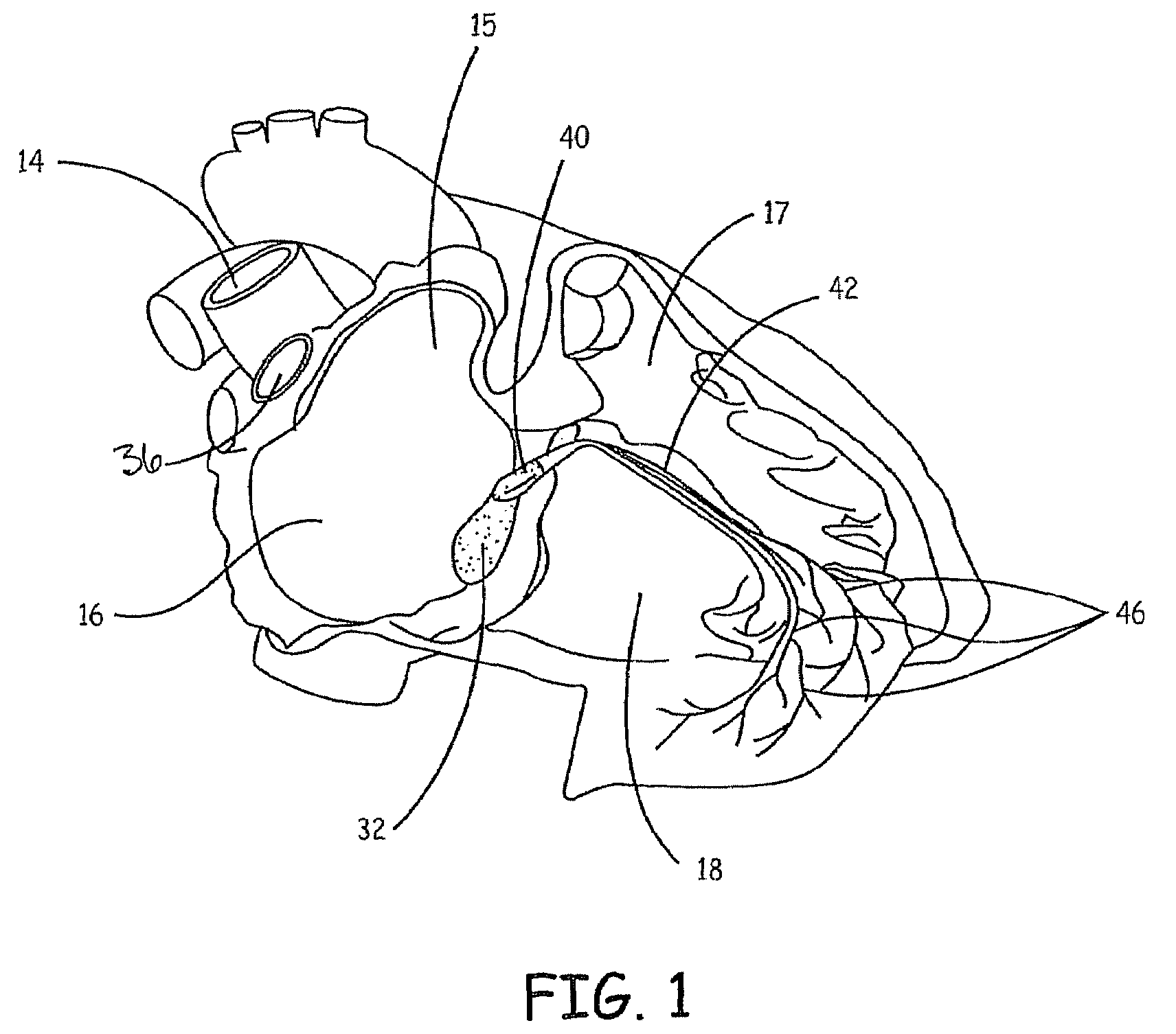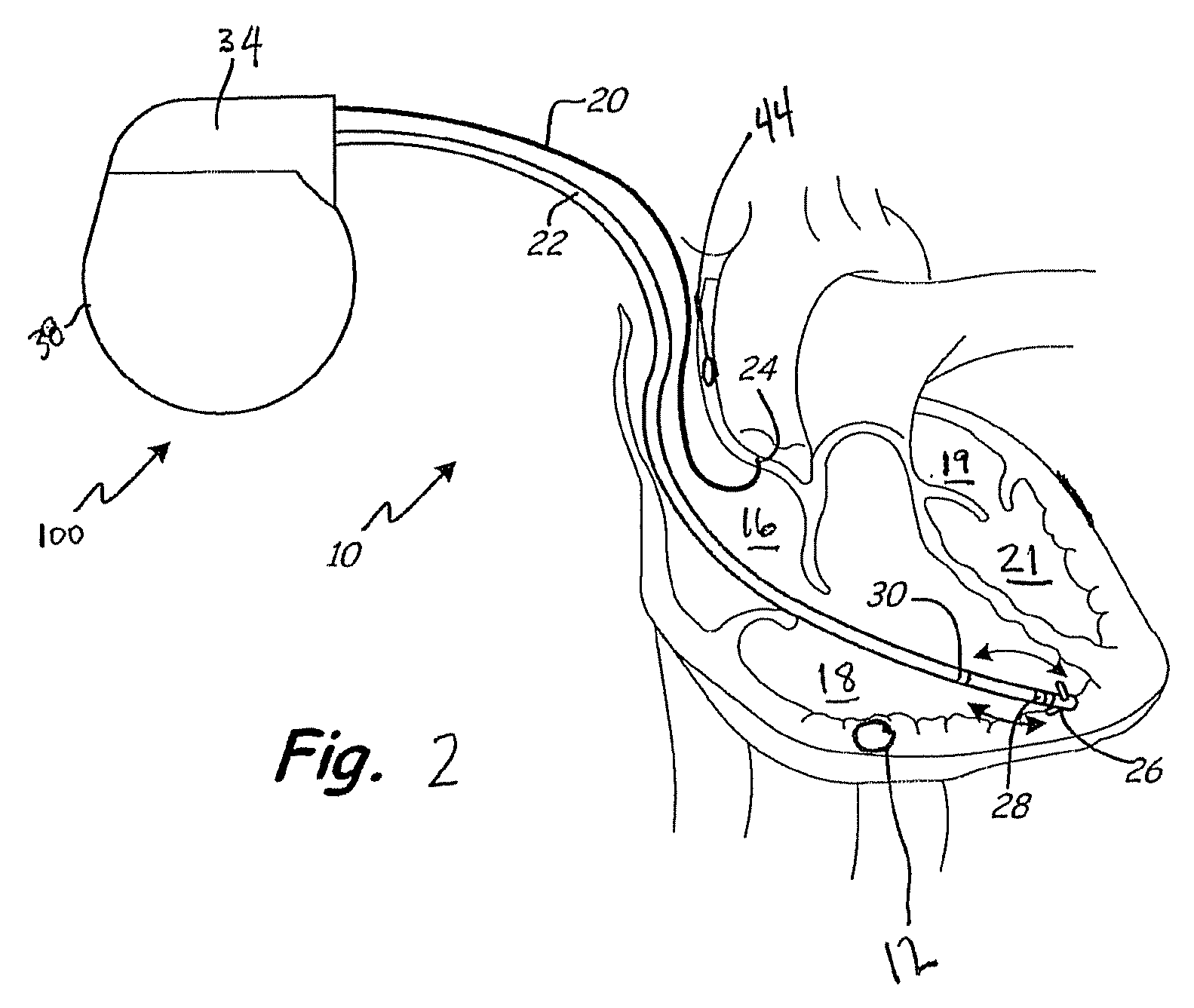Electronic and biological pacemaker systems
a technology of electronic and biological pacemakers, applied in electrotherapy, heart stimulators, therapy, etc., can solve the problems of limited life, large battery size of implantable pacemakers, and the bulkiest pacemaker components, and achieve the effect of modulating cardiac function
- Summary
- Abstract
- Description
- Claims
- Application Information
AI Technical Summary
Benefits of technology
Problems solved by technology
Method used
Image
Examples
Embodiment Construction
[0015]The following detailed description of the invention is merely exemplary in nature and is not intended to limit the invention or the application and uses of the invention. Furthermore, there is no intention to be bound by any theory presented in the preceding background of the invention or the following detailed description of the invention.
[0016]FIG. 1 is side view of the right side of a heart having an anterior-lateral wall peeled back to present a portion of a heart's intrinsic conduction system and chambers of a right atrium 16 and a right ventricle 18. Pertinent elements of the heart's intrinsic conduction system include the SA node 36, the AV node 32, the bundle of His 40, the right bundle branch 42, and the Purkinje fibers 46. The left bundle branch is not depicted. The SA node 36 is shown at a junction between a superior vena cava 14 and the right atrium 16. An electric impulse initiated at the SA node 36 travels rapidly through the right atrium 16 and the non-illustrat...
PUM
 Login to View More
Login to View More Abstract
Description
Claims
Application Information
 Login to View More
Login to View More - R&D
- Intellectual Property
- Life Sciences
- Materials
- Tech Scout
- Unparalleled Data Quality
- Higher Quality Content
- 60% Fewer Hallucinations
Browse by: Latest US Patents, China's latest patents, Technical Efficacy Thesaurus, Application Domain, Technology Topic, Popular Technical Reports.
© 2025 PatSnap. All rights reserved.Legal|Privacy policy|Modern Slavery Act Transparency Statement|Sitemap|About US| Contact US: help@patsnap.com



